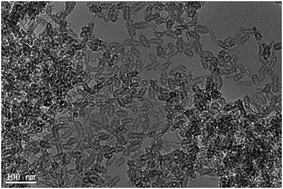Sulfoxidation inside a hypercrosslinked microporous network nanotube catalyst†
Abstract
In the present work, a kind of efficient heterogeneous catalyst was synthesized from amine-functionalized hypercrosslinked bottlebrush copolymers of microporous network nanotubes (amine-MNNs) and Na2WO4. The synthesized tungstate-supported microporous network nanotubes (TMNNs) catalyst was shown to be highly active in the selective H2O2 oxidation of sulfides to sulfoxides or sulfones under mild conditions due to the high specific surface area (800 m2 g−1) and firm structure of the nanotubes. The catalyst was found to be very stable and could be recycled at least 8 times without any significant loss of activity. These results present a new opportunity for the development of efficient green organic catalytic materials with high activity.



 Please wait while we load your content...
Please wait while we load your content...